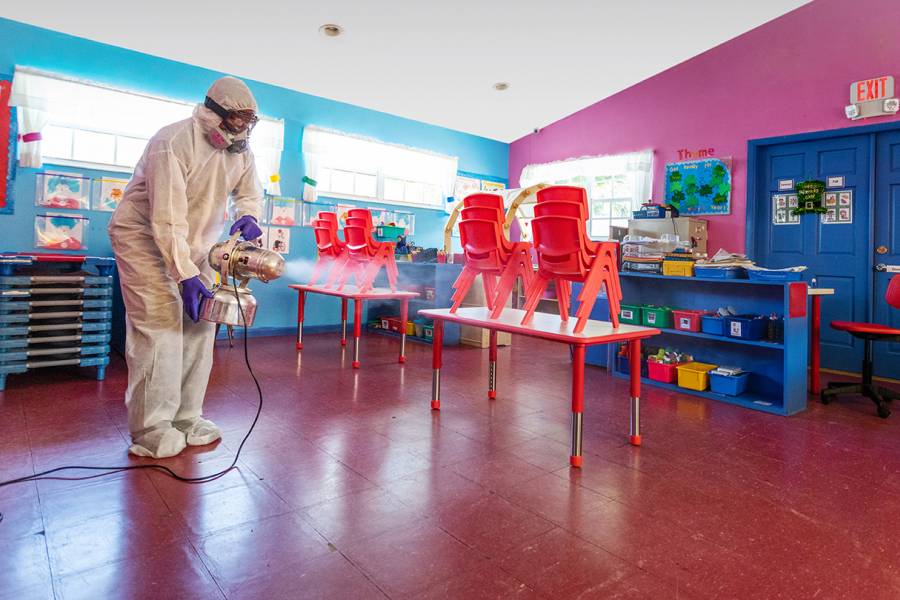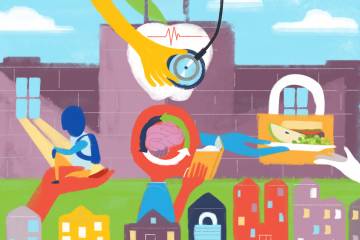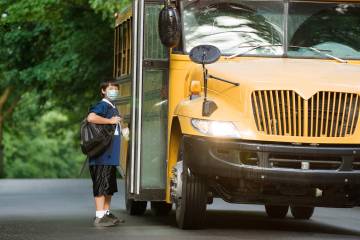Across America, a debate is unfolding with increasing urgency: Is it possible for schools to reopen safely while the coronavirus pandemic rages on? It's a question plaguing not only parents and teachers but also school boards, policymakers, and advisers, including a group of Johns Hopkins experts who convened Thursday for a press briefing. During the webcast, they discussed the steps schools must take to ensure reopening doesn't cause a rise in transmission of COVID-19.
"Students learn best in class, particularly younger students, for whom school is important not just for their academic learning but for their social and emotional development," said Josh Sharfstein, vice dean for public health practice and community engagement and a professor of practice at the Bloomberg School of Public Health. Schools are instruments of social welfare, he explained, providing meals and health services to children. They are also a form of safety and security for children whose home lives are unstable, and places where mandatory reporters who are trained in recognizing child abuse can look for warning signs and help keep kids safe.
"For all those reasons, it is an important priority for kids to go back to the school," Sharfstein said. "At the same time, we're in the midst of a pandemic, and that poses a real risk, both to the children and the adults in school."
So how can schools reopen safely? According to epidemiologist Jennifer Nuzzo, schools must prioritize student needs, follow guidance from the Centers for Disease Control and Prevention, maintain physical distance within classroom settings (including by wearing masks), promote hygiene, and limit the number of students and staff present.
Perhaps most important, she said, is that community transmission of the virus in the surrounding school district must be under control. To get there, policymakers should urge the public to continue practicing physical distancing, shore up hospital and health care resources and capacity to care for sick patients, and employ contact tracers to track transmission routes and help people who have been exposed to infection quarantine appropriately. And despite those efforts, schools should also plan for potential outbreaks to occur and prepare contingency plans built around virtual learning and supporting special needs students.
She urged policymakers and schools to consider creative solutions to reopening, such as setting up outdoor classrooms, staggering start times, using carpools instead of buses, or scheduling student attendance in "pods" or small groups that don't interact with or become exposed to members of other pods. And parents must be given the option to keep their children home if concerns over safety remain.
All told, the effort to reopen schools safely and responsibly could cost the U.S. upward of $50 billion, Nuzzo said.
"It may sound like a lot of money, but it's also in the context of funds we've already spent on this pandemic, so it's, I think, an important investment," said Nuzzo, who is an associate professor and senior scholar at the Johns Hopkins Center for Health Security. "Speed is [also] paramount. Many schools are looking at restarting in a few weeks, and not having funds has limited their ability to plan and prepare for what the fall could look like."
Annette Anderson, an assistant professor at the Johns Hopkins School of Education and a former principal, also discussed how there is no time to lose in establishing effective school reopening plans.
"I don't think there's any way to overstate the complexity [of what we're facing] when trying to reopen our schools," she said. "Normally the summer is three months of good planning—it involves hiring and purchasing decisions and thinking about staff development… and now we've layered onto that decisions we have to make about reopening schools in a post-pandemic environment, and that is a challenge."
She urged policymakers to consider ways of supporting Black and Latino children, many of whom come from communities that have also been disproportionately affected by the coronavirus pandemic. She also said that in the event schools are forced to close again and resume virtual learning, families must have equal access to computers and essential utilities like the internet. And finally, Anderson said, schools must build back parent trust by hosting back-to-school nights that show parents what it means to practice physical distancing in a school building, or what a hybrid model might look like.
Anita Cicero, the deputy director of the Center for Health Security, added that school districts should be "radically transparent" with the public about their plans for reopening. Schools in areas where cases of coronavirus are rising rather than falling should reconsider reopening altogether. And most important, she said, the U.S. needs to rethink its reopening priorities.
"This should be a national priority, and it's much more important—immeasurably more important—than opening bars or restaurants," she said.
For more information on school reopening plans, the recently launched reopening state policy tracker, overseen by the Johns Hopkins eSchool+ Initiative, will roll out added functions and metrics over the coming weeks, said Megan Collins, an assistant professor of ophthalmology and an expert in school-based health programs. New features will include a district-level tracker and global tracker, as well as in depth analysis of policies.
Posted in Health, Science+Technology, Voices+Opinion, Politics+Society
Tagged education, coronavirus, covid-19












